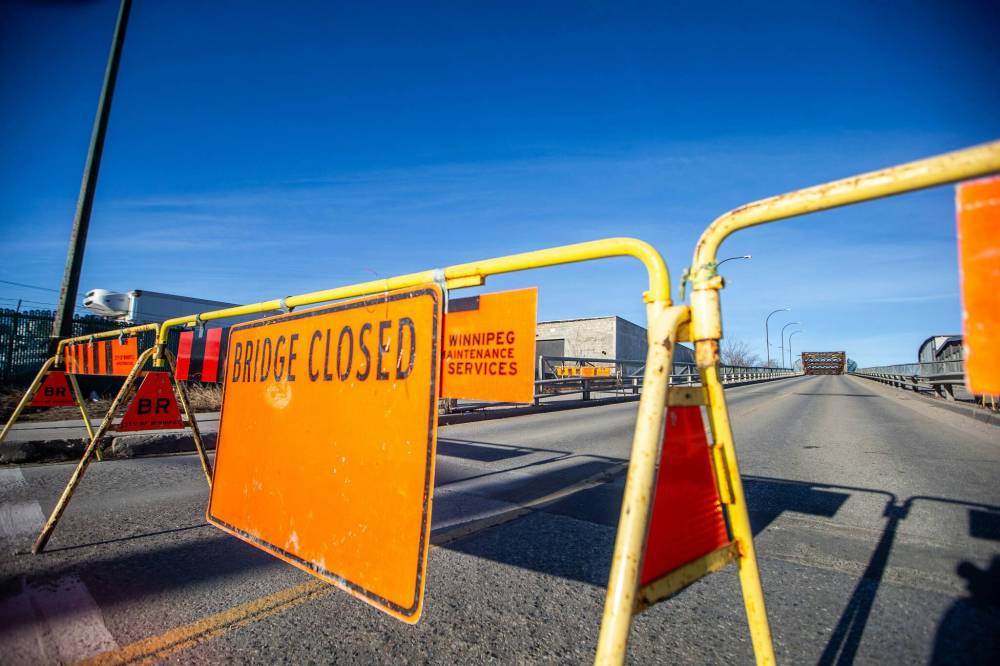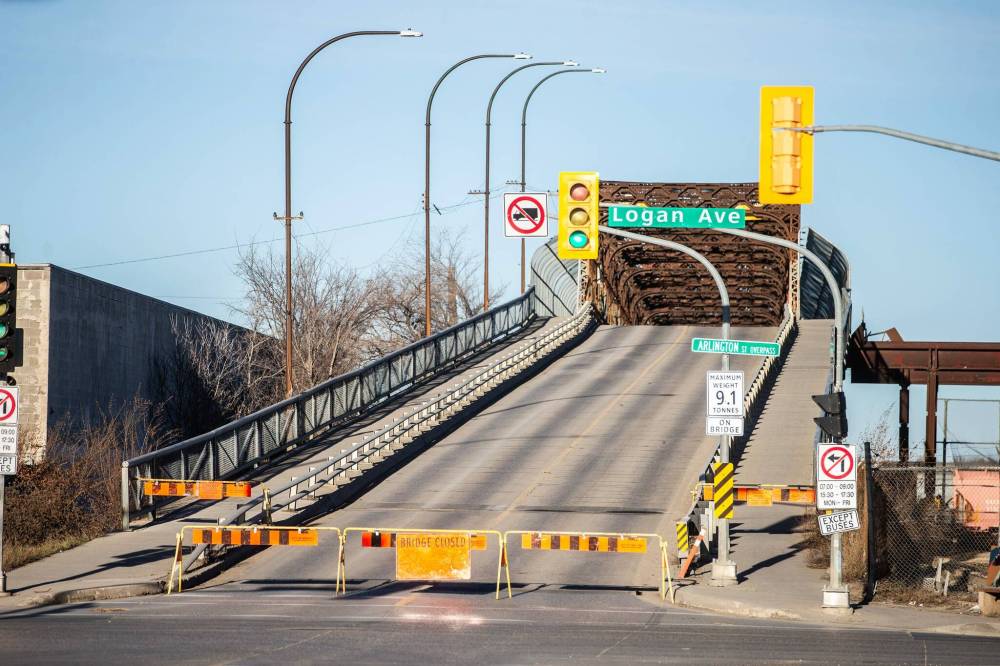A bridge to nowhere
Read this article for free:
or
Already have an account? Log in here »
To continue reading, please subscribe:
Monthly Digital Subscription
$0 for the first 4 weeks*
- Enjoy unlimited reading on winnipegfreepress.com
- Read the E-Edition, our digital replica newspaper
- Access News Break, our award-winning app
- Play interactive puzzles
*No charge for 4 weeks then price increases to the regular rate of $19.00 plus GST every four weeks. Offer available to new and qualified returning subscribers only. Cancel any time.
Monthly Digital Subscription
$4.75/week*
- Enjoy unlimited reading on winnipegfreepress.com
- Read the E-Edition, our digital replica newspaper
- Access News Break, our award-winning app
- Play interactive puzzles
*Billed as $19 plus GST every four weeks. Cancel any time.
To continue reading, please subscribe:
Add Free Press access to your Brandon Sun subscription for only an additional
$1 for the first 4 weeks*
*Your next subscription payment will increase by $1.00 and you will be charged $16.99 plus GST for four weeks. After four weeks, your payment will increase to $23.99 plus GST every four weeks.
Read unlimited articles for free today:
or
Already have an account? Log in here »
Hey there, time traveller!
This article was published 22/11/2023 (734 days ago), so information in it may no longer be current.
If you wait long enough to make a decision, eventually the decision just makes itself.
And it’s almost always not the best decision.
The Arlington Street Bridge made its decision Tuesday.
Or, more to the point, having delayed making a decision about the bridge for years, the City of Winnipeg found that the bridge’s deteriorating condition has left the city with no choice but to close the span.
It’s not surprising. Not many 111-year-old pieces of infrastructure are in the best of shape, even when their upkeep is scrupulous.
MIKAELA MACKENZIE / WINNIPEG FREE PRESS Close to 13,000 vehicles a day used the now-closed Arlington Street Bridge and they will all be diverted to other routes that are already at capacity.
Just weeks ago, the bridge came off a month of repairs — repairs that, typically, were extended after the original estimate of the amount time needed for the work turned out to be overly optimistic.
For weeks this summer, it was impossible to avoid a large sheet of metal in the southbound lane, a sheet that gave a half-musical “clank-clank, clank-clank” with the wheels of every passing car. You could not drive over that piece of metal without wondering what was under it — a hole in the bridge deck? Tire-tearing sharp projecting steel decking? A hellmouth? (OK, probably not the hellmouth. But nothing pleasant, for sure.)
It seemed like the kind of haphazard repair that a not-so-handy uncle might have done to cover torn linoleum in your kitchen, dusting his hands off afterwards and saying, “There. Got’er done.”
Even traffic lights on the Arlington bridge are an odd half-solution, with traffic heading south stopping well short of Logan on the flat of the bridge, so cars won’t slide in winter as they try to stop on the steep downhill before the intersection.
There is, of course, an apocryphal tale that the bridge was actually a second-hand reuse of a bridge superstructure meant for Egypt, bought cheap. The story would be remarkably, delightfully Winnipeg, if true, but though the story is oft-repeated, there’s precious little evidence to back it up.
What isn’t an apocryphal tale is that close to 13,000 vehicles a day used the Arlington Street Bridge, and they will all be diverted to other routes that are already at capacity.
Everything from cars to bicycles to pedestrians will now have to head to other routes — the Slaw Rebchuk bridge on one side, or the four-lane pinch-point of the railway underpass on McPhillips on the other.
It is a bad situation made worse, and a problem the city was aware it would be facing since 2011.
By Tuesday night’s rush hour, right after the closure, commuters were already filling the industrial side street of Henry Street, trying to find a workaround shortcut to avoid the log-jammed traffic lights at Logan and McPhillips, creating a whole new line of headlights and blinking turn signals, and frustrated drivers.
The city has had plans for a replacement bridge for years, but has balked at the cost — $380 million in 2018, likely much more now.
MIKAELA MACKENZIE / WINNIPEG FREE PRESS The city has had plans for a replacement of the Arlington Street Bridge for years, but balked at the cost.
And instead of long-term city planning with big ideas —including options like moving the rail corridor and CP yards further north and getting train loads of potentially dangerous goods out of city neighbourhoods — we’re likely to get more stopgaps. “Can we eke out a few more years? Can we push the replacement down the road?”
Let’s put it simply. The best-before date for the Arlington Street Bridge came and passed a decade ago.
This ancient can of peas is bulging at both ends.
Arrive at the Logan Avenue end of the bridge for the very first time, looking up the steep approach, the prevailing impression you have is that you’re looking at a bridge to nowhere, with cars vanishing from sight as they crested the ramp, disappearing into who knows where.
Now, at least for the foreseeable future, it is exactly that.
A bridge to nowhere.
Well done, folks.






